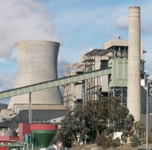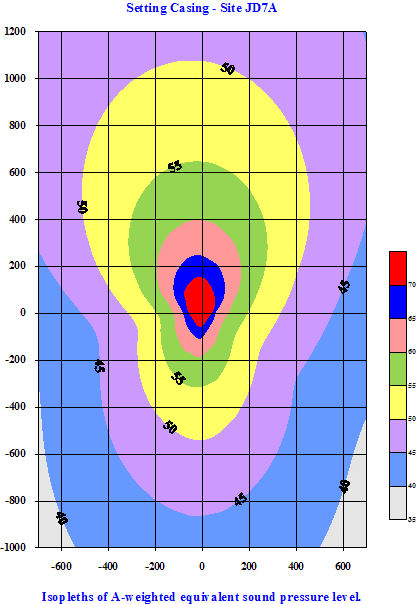 |
Depending on project-specific requirements, we carry out the noise dispersion
modeling with five different programs (software), viz.
1.
Brüel & Kjær (B&K) Predictor 7810 (Denmark/Holland/Germany) - industrial, road and railway noise;
2.
CadnaA of DataKustic (Germany) - industrial, road traffic and railway noise;
3. RTA ENM (Environmental Noise Model) (Australia) - industrial noise;
4.
US Federal Highway Administration
(FHWA) TNM (Traffic Noise Model) (USA) - road traffic noise;
5. Pollution Control Consultancy and Design (PCCD) in-house developed industrial noise model (Australia).
Below, an example of results of our noise dispersion
modeling with the PCCD in-house developed software
- isopleths (isophones) of the LAeq,T around drilling operation (source of noise at 0,0):

Such presented results allow to significantly reduce noise impact in sensitive directions just by proper orientation of noisy equipment.
Note that the isopleth of 50 dB(A) reaches:
Measurements, assessments and control of noise and vibration since 1995.